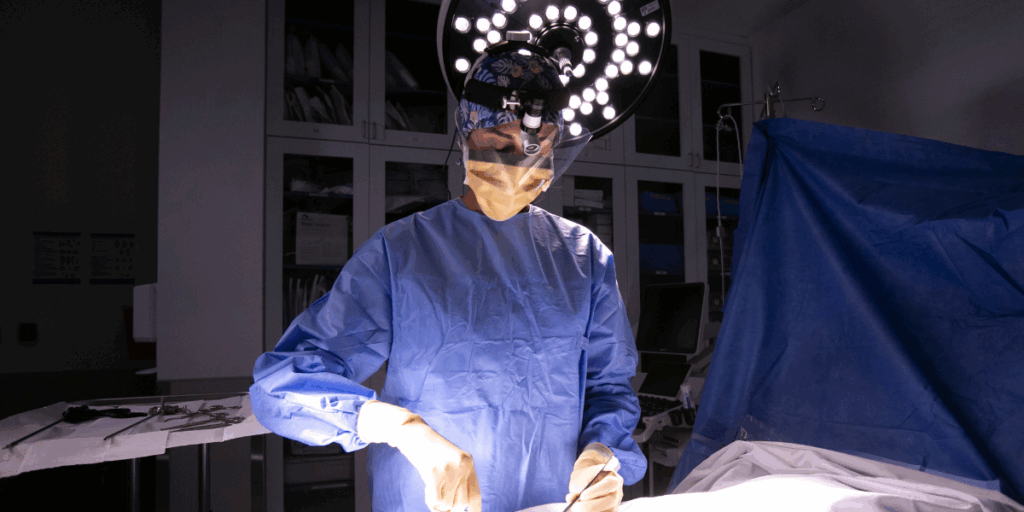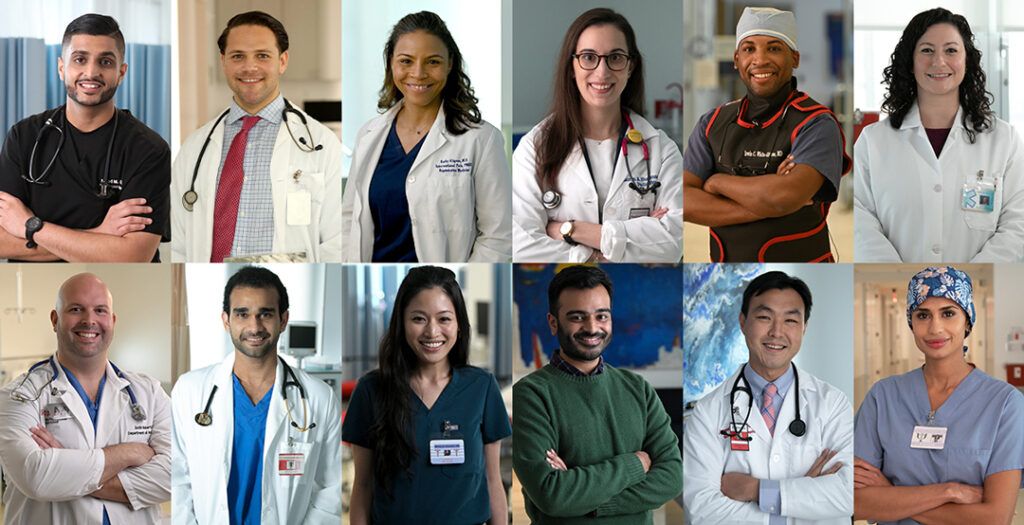Few medical specialties blend artistry, precision, and purpose quite like plastic surgery. It’s a field where restoring confidence can be just as important as restoring function and where every procedure has the potential to transform a life.
As one of the most lucrative careers and a highly competitive Match specialty, many current and aspiring doctors are drawn to plastic surgery. In fact, two St. George’s University School of Medicine graduates will begin their plastic surgery residencies in summer 2025.
In this article, we’ll cover what plastic surgeons do, why many physicians are drawn to the specialty, and how to become one.
What is plastic surgery?
Plastic surgery is a broad surgical specialty focused on restoring, reshaping, or enhancing the human body. While it’s often associated with cosmetic procedures, the field encompasses much more including complex reconstructions that help patients recover from injury, illness, or congenital conditions.
“There are two parts to plastic surgery training: reconstructive plastic surgery and aesthetic plastic surgery,” explains Jeremy Bosworth, MD ’13, a plastic surgeon at North Texas Plastic Surgery.
“Reconstructive surgery is a big part of plastic surgery training and involves things like craniofacial surgery, breast reconstruction, and reconstruction after trauma,” says Dr. Bosworth. “Aesthetic surgery involves many types of elective procedures to enhance the appearance such as face lifts, tummy tucks, liposuction, and even body contouring after weight loss. It also includes non-surgical treatments such as Botox and laser treatments.”
Most plastic surgeons receive training in both areas and often practice a mix of the two, allowing for a diverse and dynamic career. Whether repairing a cleft palate or performing a facelift, plastic surgeons play a vital role in helping patients look and feel like their best selves.
What draws aspiring doctors to plastic surgery?
Improving quality of life for patients
One of the most powerful draws to plastic surgery is the ability to profoundly change a patient’s life—both physically and emotionally. Plastic and reconstructive procedures often help individuals reclaim not just their appearance, but also their sense of identity, confidence, and well-being.
John Gillespie, MD ’10, a practicing plastic surgeon and owner of Gillespie Plastic Surgery in Wilmington, DE, witnessed this transformation firsthand when his grandmother underwent a double mastectomy following a breast cancer diagnosis.
“She wasn’t the same woman I knew before the surgery,” he recalls. “But after a follow-up breast reconstruction procedure, she “became the vibrant woman I once knew.”
Zoe Berman, MD ’17, a junior plastic and reconstructive surgery resident at Lahey Hospital and Medical Center in Burlington, MA, also knows the transformative power of plastic surgery.
As a reconstructive plastic surgery research fellow at NYU Langone Health, Dr. Berman helped perform a groundbreaking surgery. The surgical team completed the world’s first successful face and double hand transplant for Joseph DiMeo, a 22-year-old man severely injured in a car accident.
Reflecting on the experience, she shares:
“There’s something about the symmetry and the intricacies of the head and neck that I find extremely fascinating. I’ve always had an appreciation for the face and what it represents for a human being in terms of providing a sense of identity and an outlet to communicate verbally and emotionally. To help restore that identity is very meaningful in somebody’s life.”
Variety of cases
Plastic surgery is known for its incredible diversity, covering everything from complex microsurgery to elective cosmetic enhancements.
According to the American Society of Plastic Surgeons, plastic surgeons must be team players, working alongside specialists in fields like general surgery, gynecology, neurosurgery, and more. This wide scope means plastic surgeons treat work on all parts of the body, be it the face, abdomen, hands or wherever else surgery is needed.
“Plastics gives you the ability to own the entire body,” says Dr. John Gillespie. “You’re operating on people from head to toe, and therefore you have to know everything.”
A lucrative field
Plastic surgery consistently ranks among the highest-paying medical specialties and for good reason. The field demands years of intensive training, a high level of surgical expertise, and the ability to blend medical science with creativity and precision.
According to the Economic Research Institute, the average salary for a plastic surgeon in the United States is $493,337 per year, with a typical range between $320,669 and $650,712. These figures reflect the complexity of the work, the range of procedures performed, and the specialized skill set required.
While financial incentives are not the sole reason physicians choose this path, they can certainly align with a genuine passion for solving complex problems and making a visible, lasting impact on patients’ lives. For many plastic surgeons, the field offers a combination of professional fulfillment and financial stability.
How do I become a plastic surgeon?
The path to becoming a plastic surgeon is rigorous but for those passionate about the specialty, it’s well worth the effort. Plastic surgery has continually ranked as one of the more competitive specialties in the National Resident Matching Program (NRMP) for being sought after by med students with limited spots. The American College of Surgeons reported that in the 2025 Match, plastic surgery residencies had a 100 percent fill rate for the 221 positions available.
Don’t let that deter you, though. Becoming a plastic surgery requires rigor and perseverance, but it is still achievable.
“When applying for plastic surgery, I knew it would be tough to get a spot as it is a very competitive specialty,” says Dr. Bosworth. “I also knew that it was truly what I wanted to do so I was not going to let a challenge deter me.”
So how long does it take to become a plastic surgeon? For those interested in pursuing plastic surgery, here’s a high-level look at the typical path:
Earn a bachelor’s degree: Begin with an undergraduate degree, typically with a focus in biology, chemistry, or a related pre-med field. Strong academic performance and completion of medical school prerequisites are essential.
Take the MCAT and apply to medical school: The Medical College Admission Test (MCAT) is required for entry into most medical schools. A competitive score, combined with a strong GPA, letters of recommendation, and personal statement, will strengthen your application.
Complete medical school: Medical school typically takes four years: two years of Basic Sciences followed by two years of clinical rotations. This is where students build foundational knowledge and gain hands-on experience in various specialties, including surgery.
Pass the USMLE exams: These licensing exams are required to practice medicine in the US. High scores, particularly on Step 1 and Step 2, are important for matching into competitive specialties.
Match into a residency program: Aspiring plastic surgeons can apply directly to an integrated plastic surgery residency, which typically lasts six years and combines general and plastic surgery training. Another route could be matching into a general surgery residency and then specializing in a plastic surgery fellowship after.
Pursue a fellowship in a subspecialty (optional): After residency, some plastic surgeons choose to further specialize in areas such as craniofacial surgery, microsurgery, or aesthetic surgery. Fellowships offer advanced training and are often one to two years long.
Become board certified and begin practicing: After completing training, plastic surgeons can seek certification from the American Board of Plastic Surgery.
Are you on the path to becoming a plastic surgeon?
If plastic surgery sparks your curiosity and you’re ready to rise to the challenge, St. George’s University School of Medicine can help you get there. SGU graduates are proving every day that drive, skill, and global perspective can take you far.
Explore how SGU can be the foundation for your future in medicine. From med school applications to board certification, also read our free resource, Journey to MD.


